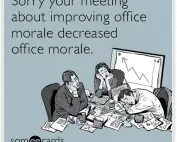How to be a Big Picture Business Leader
In today’s dynamic business environment, the most effective decision-makers view their business at the macroscale. A Big Picture business leader understands how everything from employee engagement to customer satisfaction impacts the bottom line and uses that to make informed strategic decisions.
0 1
How to Start Thinking Big
Thinking big starts with a long-term vision of growth milestones and the cultivation of relationships with customers and employees. While it’s easy to get caught up in short-term interactions, such as signing a less than ideal client to meet a sales goal, focusing on the key problems your business solves, the people who want your solutions, and the kind of team you need to take your solutions to market maintains your big picture view.
Thinking big also entails recognizing opportunities. The Harvard Business Review’s article The Innovator’s DNA describes a trait apparent in many of today’s most notable CEOs, creative intelligence. Creative intelligence is the way innovators apply their business acumen to seize upon opportunities other business leaders ignore. By leveraging their creative intelligence, business leaders Steve Jobs, Michael Dell, and Jeff Bezos were able to anticipate market trends, turn existing models on their heads, and offer a better customer experience.
These innovators created new ways to deliver value to the market. They aligned their business goals to support and scale that value internally and externally through customer and employee feedback. They also measured the critical components of their business so they could understand what was necessary to build upon their success.
The savvy business leaders vocabulary
Assets. Anything a business owns that has value.
Balance Sheet. A summary sheet of business assets and liabilities.
Capital. The long-term worth of a business demonstrated by cash accounts, assets, and investments.
Cash Flow. Amount of operating cash flowing through a company, affecting its liquidity.
COGS. Cost Of Goods Sold. The direct cost of producing the goods sold by a company.
Income Statement. A report on how much a business earned and spent over a given time. Also called a profit and loss statement.
Liabilities. Legal obligations to be paid or debts to be settled.
Operating Expenses. The expenses a business incurs through its normal business operations such as rent, equipment, inventory costs, marketing, payroll, etc.
Profit Margin. Profit margin kept relative to total sales. There are three types: gross, operating, and net profit.
ROI. Return On Investment. How much was gained or lost on an investment relative to how much was spent.
“Leadership and learning are indispensable to one another.” – John F. Kennedy
0 2
What’s in a Big Thinker’s Toolbox?
A big thinker is constantly measuring and learning. Key Performance Indicators, KPIs, measure a company’s success against a set of targets, objectives, or competitors to understand the efficiency of operational and financial strategies.
KPIs need to be clear but flexible. According to a recent McKinsey survey, 96% of businesses changed their go-to-market model because of the COVID pandemic. Some companies closed, but others flourished by adapting and tweaking their KPIs.
Risk assessment, competitive analysis, and opportunity recognition are big thinker tools leveraged in a SWOT analysis. SWOT analysis is a listing of a company’s Strengths, Weaknesses, Opportunities, and Threats to help the organization think critically when making decisions.
A big thinker is always evaluating past decisions, learning from mistakes, surveying the market, and taking in new information. Constant learning gives big thinkers an advantage when assessing risks and opportunities, making them savvy business leaders.
Make every cent count
0 3
The big picture is people
A big thinker realizes they must invest in the two most important components of business success: customers and employees. For specific strategies on building customer relationships and keeping employees engaged check out our course Business Acumen.
A big thinker cultivates good customer relationships via consistent and respectful communication as part of the long-term growth plan. Demonstrating customer appreciation before, during, and after the sale makes customers feel valued and more inclined to maintain relationships with your business. This can be as simple as a phone call or an email.
It’s most important to listen when a customer provides feedback and let them know you’re acting upon it. Big thinkers know growing existing business is more profitable than finding new customers, so they exercise honest, friendly, and polite communication to encourage customer loyalty.
It is also more profitable to keep good employees than spend the resources to recruit new ones. A big picture leader invests in their employees with fair salaries, advancement opportunities, and training. Employees also feel more engaged when office communication is clear and honest. Asking for employee feedback not only makes employees feel important, it often leads to ideas for process improvement, making the business more efficient. Organizations that best engage their employees achieve earnings-per-share growth 4x that of their competitors.
Big thinking business leaders aren’t born that way. They learn to see the big picture by asking questions about the kinds of goods and services people want and then experimenting with measurable methodologies for going to market. If you want to know more about what it takes to be an effective business leader, we have two courses below you can sign up for to get you started.
Common Questions
Business acumen is an acquired ability to understand and address business situations such as risks and opportunities in a way that leads to a desirable outcome.
- Understanding how key drivers of the business relate to one another and can be adjusted to increase profits.
- Understanding business fundamentals such as financial statements.
- Understanding how actions and decisions impact company objectives.
- Having the ability to effectively communicate with customers, employees, and stakeholders.
- A good KPI is clear and defined to a specific area of the business needing improvement. Use SMART goals to keep them focused.
- Pick KPIs that align with your strategic objectives and your market fit.
- Different levels of management should have KPIs suited to their purview.
- Consider what makes your business unique and make sure your KPIs reflect that.
- Select KPIs you can achieve and ones you can inform with data.
- Choose actionable KPIs. It does no good to measure something beyond your control.
- Brainstorm with your team to determine what to measure and what criteria to use to inform your decisions. This helps establish buy-in.
SMART is an acronym for Specific, Measurable, Achievable, Realistic, and Timely and is a methodology for making metrics precise with actionable milestones.
- Goals should be narrow for effective planning.
- Define what evidence will demonstrate progress and re-evaluate as necessary.
- Goals should be attainable within a given timeframe.
- Goals should align with long-term objectives.
- Set ambitious but realistic deadlines for completion.
A competitive analysis is a strategic exercise in which a business identifies key competitors and researches their products as well as their marketing strategies.
- Identifies opportunities for competitive gain.
- Keeps you on top of industry trends.
- Helps inform you of ways to improve your product or service’s value proposition.
- Provides you a benchmark for growth.
- Helps you identify features your product or service lacks.
Studies show actively engaged employees are more likely to invest time and energy into their jobs, leading to increases in productivity and work quality. Companies that invest in their employees do better at attracting and retaining top-level talent
- Encouraging employee feedback and listening to employee suggestions engenders trust by demonstrating the importance of employee input.
- Bonuses, recognition, and opportunities for advancement encourage employees to work harder.
- Staff training and mentoring programs provide employees new skills and opportunities for growth and advancement.
- Communicating the Big Picture to employees helps them understand how they fit into the company vision and helps them feel vested in the company’s success.
Brian Abbey is a freelance writer with 25 years experience in tech, marketing, higher education, and startups. An American, now living in Romania, he creates content for multinational firms in Asia, Europe, and the United States, garnering over 100K readers on topics ranging from medical trends to artificial intelligence and university student engagement.
This is one of our executive briefings taken from our series of professional online business short courses from ELL. We have over 10 courses online with over 1,000 hours of e-learning covering a wide range of topics across leadership, management and personal & professional development created by industry experts and learning professionals.
Business Acumen Courses
Business Acumen is all about seeing the big picture and recognizing that all decisions no matter how small can have an effect on the bottom line. It’s about being savvy commercially and financially and seeing an end to end opportunity and equation. Not all business or sales are profitable and thinking on your feet is as much an art as a skill. Our Business Acumen course will give you the financial literacy and business sense you need and an advantage others wished they had. It will help you recognise opportunities and learning events, manage risk better and increase your critical thinking. This course has the ability to influence your whole organisation and give you that extra edge.
By the end of this course you will have
- Improved critical thinking skills
- Key financial competencies that are relevant to developing smart business
- A confidence to think through any deal that comes your way
In each of our business courses, you get access to around six hours of e-learning that you can watch, listen and read. There are usually 100 questions and at the end of the course you will receive a certificate of completion that you can use against any personal or professional development requirements. As well as the course, you also receive a FREE e-book that you can read on your Kindle or other e-reader. You also get a FREE audiobook of the course so you can listen to the whole course uninterrupted on your device.














